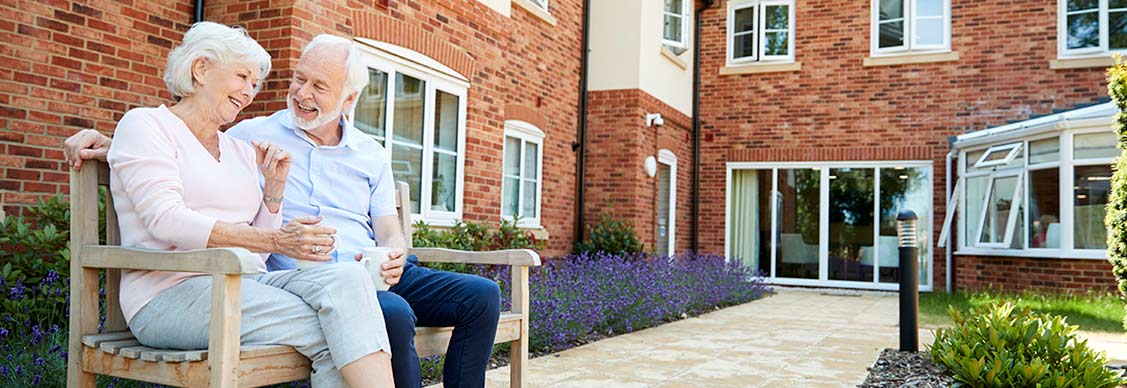How senior living is evolving for ageing populations
Mixed-use senior living communities are emerging in new markets
Senior living concepts long fell into two categories: homes that gave residents a high level of independence, and others that provided a greater level of support.
But a new crop of developments are seeking to provide both “independent” and “care home” options.
While this isn’t new for all countries – most notably the U.S., which has a deeper history with retirement living communities – new markets are catching up.
Take the U.K., where new entrant Opus, has announced plans to create a retirement living portfolio worth £1 billion ($1.24 billion). Their first two sites will feature 290 apartments alongside a 90-bed care home.
“These communities let residents enjoy amenity-rich facilities, with added peace of mind that onsite continued care options will help them ‘age in place’ without major upheaval,” says Daniel Thorpe, JLL Senior Research Analyst.
A major thrust behind such projects is fast-aging populations. The U.S. population of people over 80 years old will grow by almost 50% in the next decade, according to government data. More than one fifth of the EU population is aged 65 and in the next 20 years, Germany and France will each see their over 80 demographic increase by 2.4 million and 3 million people respectively.
“The volume of new retirement accommodation needed to be built in Europe alone is equal to housing a population equivalent of London,” says John Gladstone, Head of Healthcare Investment, International Capital Markets, EMEA.
The need in the U.K. is particularly acute, with census data showing there are now more people over 65 years old than under the age of 16, and an expected 71.5% increase in the over 80 population by 2042.
“We estimate an extra 725,000 senior living units are needed by 2025,” says Thorpe. “Currently only 0.6% of British retirees live in this type of housing, ten times less than in markets such as the U.S. and Australia.”
Looking for more insights? Never miss an update.
The latest news, insights and opportunities from global commercial real estate markets straight to your inbox.
Increased U.K. investment
A swathe of new U.K. operators and developers are busy securing capital for senior living projects. Untold Living, backed by investor Matter Real Estate, is working on three developments of purpose-built retirement housing with care, including properties to buy, rent and own through shared ownership.
In London, luxury operator Riverstone is expanding with a fourth prime site, complete with care services for residents who need more support.
The average price of senior living in the U.K. is up 21% over the past five years, according to JLL. And a 2023 survey found 44% of investors expect to grow their senior living portfolios.
“Investors are currently looking to diversify assets for growth and resilience,” Gladstone says. “And in the U.K. mixed tenure and rental models providing steadier income streams, are starting to join traditional ‘for sale’ options.”
Taxpayer savings
It’s not just retirees who’ll benefit from increased investment in the sector. The U.K. government saves up to £1,540 ($1,915) per year for each person moving into senior living, according to Demos and The Aston Research Centre for Healthy Ageing.
It’s why the U.K.’s Housing with Care Task Force wants to help 250,000 people live five more healthy years by 2030, targeting a saving of £5.6 billion ($6.9 billion) for the UK’s health and social care systems.
“With no central NHS provision for social care, cash-strapped local authorities struggle to find funds,” explains Thorpe. “There’s huge appetite for something that bridges the gap between mainstream housing and care homes, making IRCs (integrated retirement communities) the fastest growing subsector in U.K. retirement living.”
Investment Opportunities
Repositioning for retirement
With demand on the rise – especially in metropolitan areas where space is at a premium – investors are repositioning real estate from other asset classes.
Residents can remain close to family and friends, with access to good transport links, shops, museums and theatres, while recruitment of skilled care workers is easier in cities, says Thorpe.
When it comes to repurposing properties, “office conversions work well due to good floor to ceiling heights for additional services,” explains Gladstone. “Hotels are ideal as they’re already subdivided and have multiple bathrooms, lifts and good building access.”
Affluent cities such as London are ripe for this type of development. In Central London’s exclusive Kensington neighbourhood, Loveday has transformed a former office building into 40 elegant apartments providing specialist dementia care, complete with spa, salon, library, roof garden, cinema and gym.
Providing more senior housing that better suits current and future needs, is in society’s wider interest. “It could have a ripple effect across the wider housing market,” says Thorpe. “By freeing homes for families and ‘second steppers’ it also releases stock for first time buyers.”
Ultimately, mixed-use integrated senior living helps deliver better quality of life and continuity of care. “Investors are now considering social value in their development strategies, and this model can help reduce loneliness and build new, mixed-use retirement communities” concludes Gladstone.
Contact Daniel Thorpe / John Gladstone
JLL Senior Research Analyst / Head of Healthcare Investment, International Capital Markets, EMEA.What’s your investment ambition?
Uncover opportunities and capital sources all over the world and discover how we can help you achieve your investment goals.




